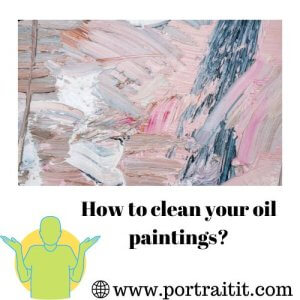Oil painting refers to a variety of paintings created with oil. The oil painting depicts a painting on canvas with correctly pitched out pigment-like colors that naturally bond with each other with ease thanks to drying oil. Oils procured from linseed, poppy, and safflower seeds are the most commonly used seed oils in paintings. The oils that are used in paintings have an immense effect on the catalytic properties of the color and the final outcome of an artwork. Different oil paints may cause more yellowing or change the drying time. One of the most popular and recognized types of art is oil painting. Many world-famous paintings are oil-based.
Oil painting is an old art form. Other paints, such as street art spray paints, are less than a century old. The oil painting has seen a change iny times. Oil paint was evidently used as early as the fifteenth century.
Oil paint remains were discovered in Afghanistan’s Bamian Valley by scholars. They think that the numerous caves in this region were painted by ancient Indian and Chinese artists using oil paints.
Handling, cleaning, and preserving oil paintings require a little extra care.
Knowing how to clean an oil painting portraits from photos without damaging the surface or taking away from its beauty is an important skill. It goes without saying that oil paintings need to be handled, cleaned, and preserved with extra care. Knowing how to care for your oil painting, especially how to clean it, will ensure that it maintains its original appearance, whether you’ve bought a new piece or found a historic treasure.
1. Removing Dust from Oil Painting Canvases
Brushing off the dust from the canvas can make the painting look bright and new; this not only gives it a good look but also makes it look as good as new. This should be the first step in cleaning your painting to make it look new. Brushing should be done in left-to-right motions; do not mix up the motions by introducing a circular motion if you start with a left-to-right motion.
2. Clean Oil Painting More Thoroughly
A good way to do this properly is to start from a smaller section, as it will make your work easier. Always choose and dissect the painting before trying to dust it off. Dividing the painting into smaller sections will allow you to more effectively remove mini dust particles that might have gone unnoticed or undusted.
3. Routine Dusting of Oil Painting
Having the painting dusted every few weeks will keep it in good condition; dusting a very old painting rarely causes tears. That is why it is very essential to take routine care of the paintings. They are, in fact, valuable and treasured.
4. Protective Glazing
Oil paintings should be framed with a glass or acrylic glazing layer. When adding this thin coating, leave a minimum of half a centimeter between both the highlighting and the peak point of the art. To do this, put a linker bar or an internal frame liner between the surface of the painting and the frame itself.
Glass and acrylic glazings with anti-static and glare-reducing properties are available. The glazing will protect the surface from dirt, dust, nicotine, and other types of damage. The task of cleaning off the glazing with a dry or damp cloth begins, and you then have to use a gentle hand to wipe down the surface, depending on the type of dirt that has accumulated. Do not touch the frame or allow any liquid to run under the frame, beneath the glazing, when using a dampened cloth.
5. Correct Placement
At all times, place your painting away from direct sunlight and moisture sources. Don’t hang your painting, for instance, next to a window that gets direct sunlight or close to a kitchen or bathroom. It is best to keep the painting in a room with little to no smoking if you smoke indoors. Additionally, it’s a smart idea to keep the painting away from places with a lot of air movement, upon other to an open window
Paintings should also be kept away from kitchens and dining rooms because the steam and grease in these areas can damage them.
6. Wear Gloves.
This is to prevent any kind of toxic liquid that would come in contact with your skin and harm you. These are some myths about how to clean your oil paintings efficiently. You should never clean your oil paintings with the materials mentioned below as they would lead to the rupture of the painting and bringing it back to its original form would become extremely difficult.
Dont’s.
- Cloths Or Paper Towels.
- Dusters Made Of Feathers Or Stiff Brushes.
- Water.
- Rubbing Alcohol, Vinegar, Lemon Juice, Or Household Detergents.
- Baby Oil.
- Bread Or Potatoes.
All these tips will definitely help you to make sure you clean your painting very efficiently!
Happy Painting!



